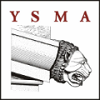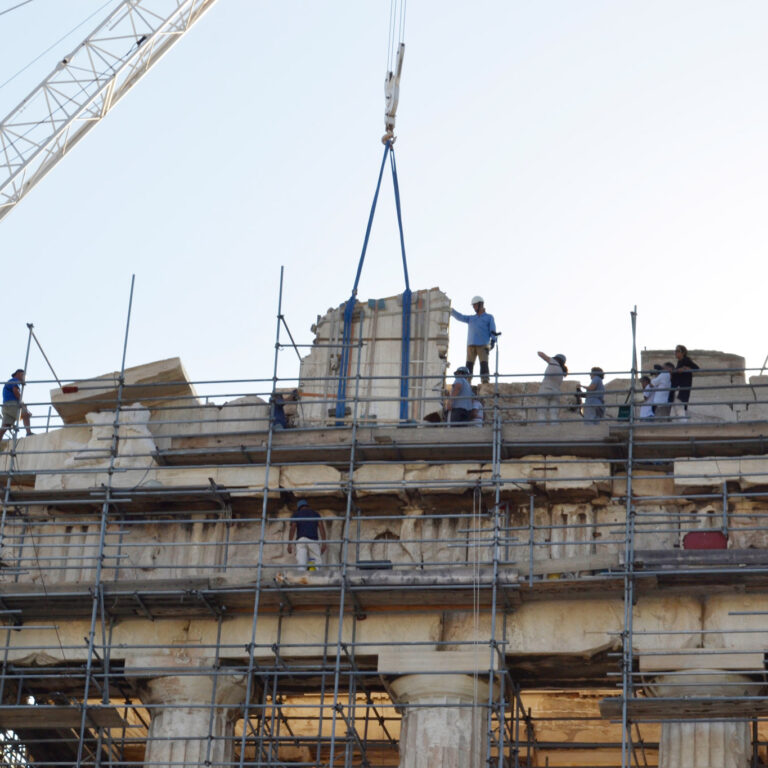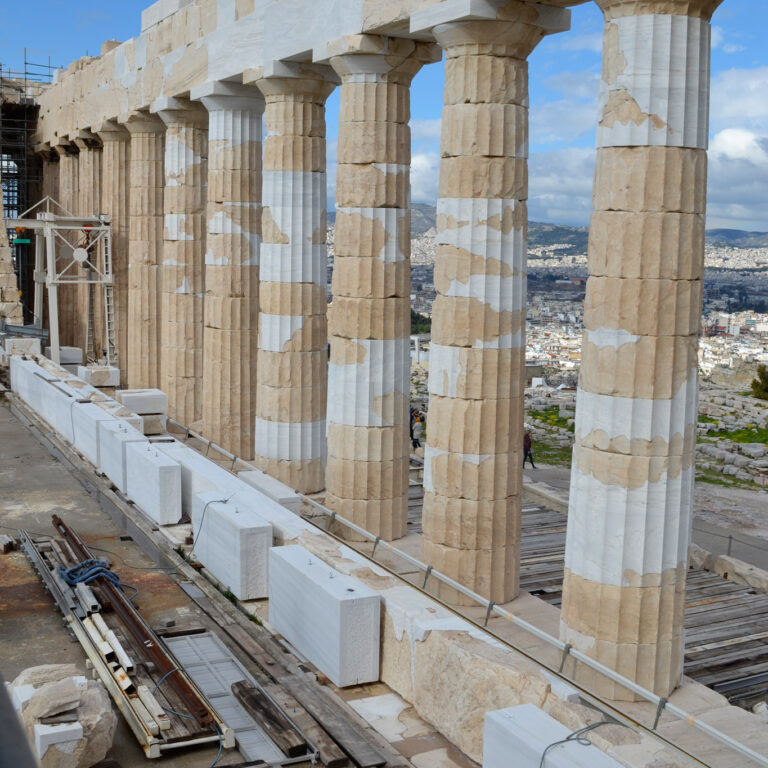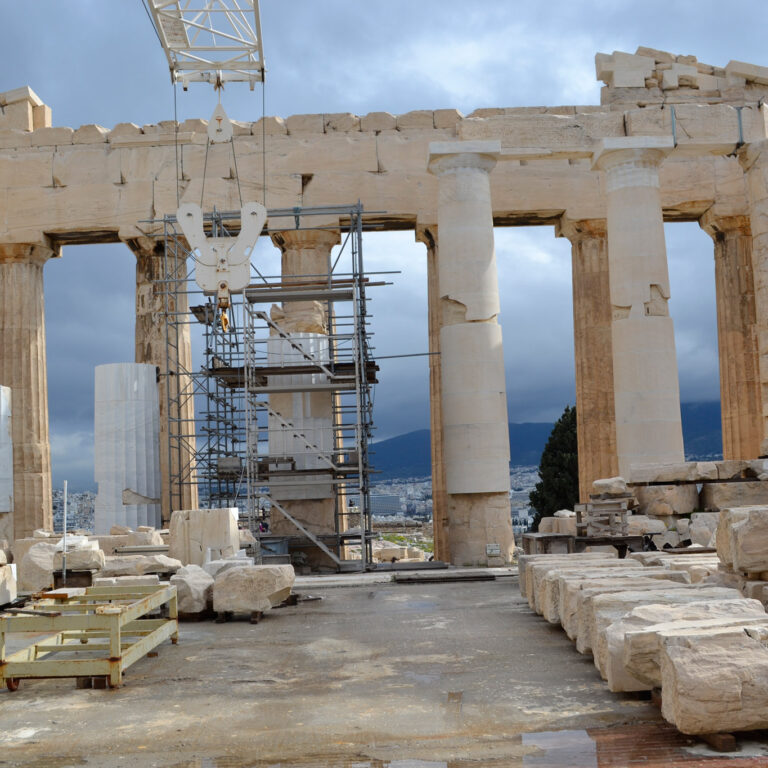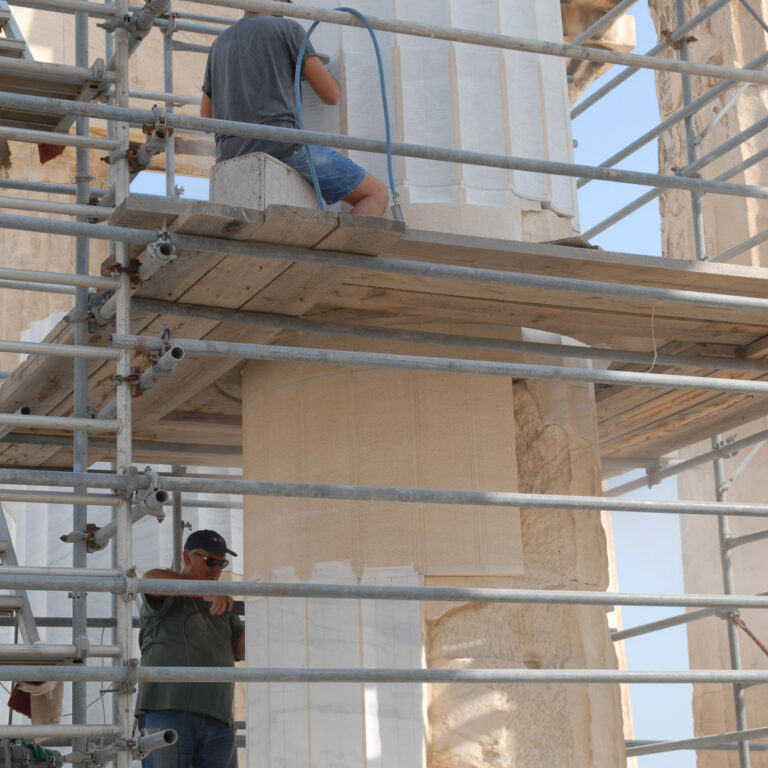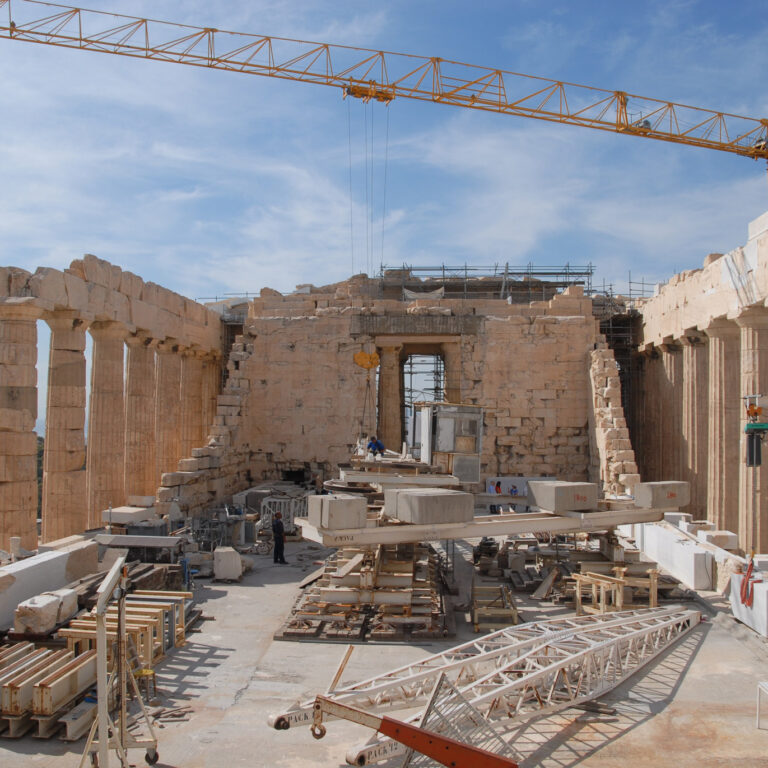
The new period of works funded by NSRF 2014-2020 comprises an extensive intervention programme in the Parthenon concentrating mainly on the pediment of the west side and on the side walls of its cella.
In 2016-2017, after examining the matter of the worksite infrastructure of the Parthenon, it was decided to transfer the Potain crane inside the monument. That crane, placed on the monument in 2002, has primarily assisted the works of restoring the north side of the monument and later on its west side. At the same time, it was also necessary to remove the Derrick crane, situated in the cella since 1983, because of its recurrent and unexpected failures. It was decided not to destroy this particular crane but to transfer it to Lavrio in December 2017 and place it in the NTUA technological park, where it will be exhibited as the most important machinery of the Parthenon restoration for over thirty years.
According to the study of R. Christodoulopoulou and V. Manidaki the crane has to move on rails in order to accommodate all kinds of work, even the most demanding cases of lifting heavy loads, while its sub-base extends to the west wall of the cella. The removal of the cranes necessitated, in addition to moving a large number of architectural members so that they could be found within their range, the dismantling and removal of worksite constructions that had been built on the west part of the cella.
The programme of restoring the west pediment started in June 2017. The work has a rescue character because its goal is to remove the oxidized clamp elements of the Balanos intervention, to conserve and reinforce the architectural members and also to eliminate the distortions and reinforce the seating of the orthostat blocks as it appears to have the most serious static problems.
According to the approved studies concerning the restoration of the orthostat of the tympanum (study by V. Manidaki and L. Palaiologos) and the restoration of the backing wall (study by K. Skaris), it is necessary to carry out the following works: the dismantling of 3 middle blocks of the tympanum and the upper layers of the backing wall, their structural restoration and repositioning on the monument. A fourth orthostat and a number of blocks from the backing wall are to be reinforced in situ. For a secure seating and binding of the members few fillings of new marble will be added and used together with specially designed clamp elements made of titanium.
The sidewalls of the cella were largely destroyed in the explosion of 1687 and partially restored in more recent years, in 1844 and 1928, with the use of blocks placed on the west part of the wall in random positions. During the 90s the restored areas were dismantled, the oxidised iron clamps were removed and alternative possibilities for a new restoration were examined aiming at relocating the blocks in their initial positions (studies by: N.Toganidis-K. Matala and N. Toganidis-K.Parashi). In the period 2012-2015 the works conducted, in line with the approved study and as it was modified by K. Skaris, were the structural restoration and the setting of the toichobate blocks, of the orthostat and the first row of the north wall of the cella.
Within the framework of the current NSRF 2014-2020 programme it is expected that the restoration of the orthostat, comprising 15 ancient and 2 new blocks in its external facade, 2 ancient and 18 new blocks in its internal facade, will be completed
At the same time the restoration of the 1st and 2nd row continues by placing back the restored ancient blocks, which had been identified as belonging to these layers; moreover, blocks made of new marble were carved and positioned where necessary. The two lowest rows of the wall are to be completely restored, in order to form a steady base for the additional 5 overlying rows, the total number expected to be restored.
The implementation of this programme will contribute to the restoration of the structure of the cella walls and the enhancement of the monument’s architecture.
The works of carving flutes in the new fillings of the 3rd column in the Parthenon pronaos belong to these on-going programmes. They include the final process performed on the surfaces of the drums made of new marble and demand high specialisation and skill by the marble craftsmen.
Finally, repositioning the ceiling beams of the west wing has also been placed within the framework of NSRF (2014-2020). It concerns the 5 ancient, restored beams and the 10 beams made out of new marble in the 1950s. With this intervention (Study by: K. Skaris, R. Christodoulopoulou, Z. Konteas and A. Vrouva) ancient blocks such as the southernmost free beam and two identified fragments from the northernmost one will be placed back in the monument. In addition, the use of specially designed clamps will statically restore two more beams. Later, all or some coffer slabs made of new marble – which were shaped during the same time with the beams – will be placed back on the monument according to the decisions taken by ESMA and KAS. This intervention is expected to create the impression that the west area of the monument is covered and to recreate the lighting conditions of the Ionic frieze of the Parthenon.
